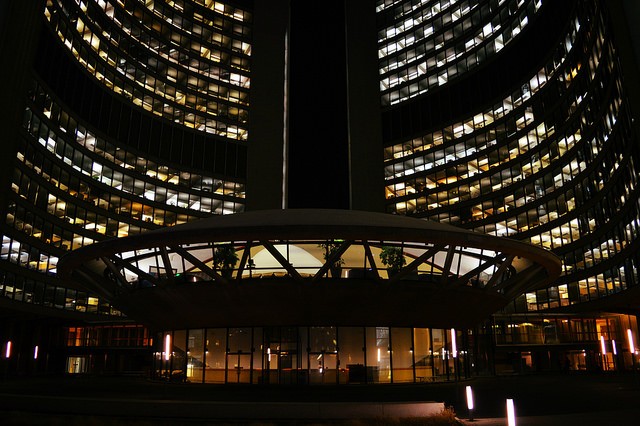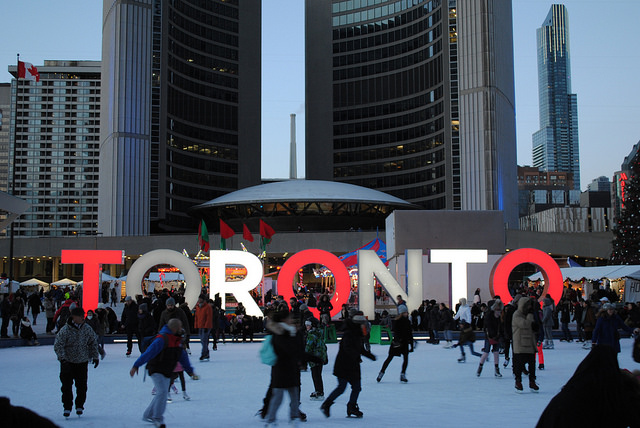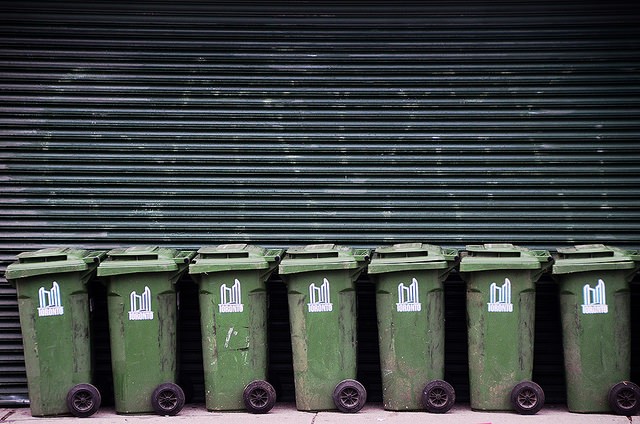…I’m really depressed. Yeah, that’s about it. Yes, it’s taken me several months to get around to writing this, and sorry for any sloppiness because I’m just dashing this off before going to Tim Horton’s because the faint hope of winning a free coffee is the only thing that can get me out of the house today.
Author: nevillepark
Toronto City Council’s 10 Worst Motions of 2016
So I ranked Council’s 10 worst motions from 2016. Check it out at Torontoist.
Toronto City Council Preview: December 2016
From road tolls to water rates, we read Council’s agenda so you don’t have to.
The rate-supported budget—water, waste, and parking—will be passed this meeting. But it’s a regular Council meeting, too! Try to contain your excitement! The Big Ticket The water, waste, and Parking Authority budgets get passed today. (These are separate from the tax-supported budget, which comes to Council in mid-February.) Read our discussion of the rate-supported budget. […]
The post Toronto City Council Preview: December 2016 appeared first on Torontoist.
What You Need to Know About Toronto’s 2017 Water, Waste, and Parking Budget
Toronto actually has multiple City budgets! Think of this as the secret one that no one talks about.
When people talk about the City budget or the budget process, they usually mean the tax-supported budget. But there’s another budget—or, rather, there are three. The water, waste, and parking budgets are funded by people paying fees for the services they use (and only the services they use). They make up the rate-supported budget, which […]
The post What You Need to Know About Toronto’s 2017 Water, Waste, and Parking Budget appeared first on Torontoist.
Toronto City Council Preview: November 2016 (SmartTrack, Ward Boundaries, and Flood Protection)
Every month, Torontoist reads the Toronto City Council agenda details so you don’t have to.
On this month’s busy agenda: SmartTrack, redrawing Toronto’s wards, service animals, skate parks, and more. The Big Ticket The people want SmartTrack. SmartTrack, SmartTrack, SmartTrack. A major transit report on the City’s commitment to a development process and funding for SmartTrack comes to Council this month. There are many unknowns, untruths, and potential snags. Read […]
The post Toronto City Council Preview: November 2016 (SmartTrack, Ward Boundaries, and Flood Protection) appeared first on Torontoist.
Four Ways that SmartTrack Could See More Problems
It has political support, but it’s still an unfunded plan with billions in questionable assumptions.
After Executive Committee unanimously approved the recommendations in the key transit report released earlier this week, the item will go to City Council for debate next week. If it passes there as well, does that mean SmartTrack is a done deal? No. This is just the first step in a long process, and through the […]
The post Four Ways that SmartTrack Could See More Problems appeared first on Torontoist.
We Annotated Toronto Council’s Transit Report So You Can Follow Along
We make sense of the report with billions of dollars’ worth of implications for Toronto’s transit future. (You can suggest your annotations too!)
Dang, Toronto’s transit planning is confusing. Unfortunately, the language in staff reports that’s used to inform decision-making doesn’t always help, either. Sometimes it can be verbose, or you need lots of institutional knowledge to appreciate the context and underlying issues they’re referencing. So we here at Torontoist have annotated the recent staff report on the […]
The post We Annotated Toronto Council’s Transit Report So You Can Follow Along appeared first on Torontoist.
Hot Take: Private parks set a perilous precedent
Look. I love nature and public space and all, but parks funded by private donors set a very bad precedent.
First, it reinforces the idea that parks are “extra”, not something that the City itself should invest in. It makes the creation of new parks (and the resources allotted to them) dependent on the whims of wealthy donors and not solid urban planning principles. It’s unpleasantly reminiscent of local improvement charges, i. e. rich homeowners paying to spruce up their own neighbourhood.
I’m afraid this will continue to marginalize places that aren’t tourist hotspots, scenic landscapes, or up-and-coming neighbourhoods. Not every park can be as exciting as the Don Valley or Rail Deck Park or whatever they’re calling Under Gardiner. Not every park has to be. Parks shouldn’t just be attractions people visit on special occasions, like the zoo. They should also be a part of everyday life.
Green space is an urban amenity as essential as libraries and clean water. Aside from parks’ importance for health and the environment, they are valuable in their own right as public space. They’re places where you can loiter, sleep, relax, exercise, cool down, picnic, socialize, drink covertly, collect beer cans…all without having to buy anything. For many city dwellers, parks are our backyards.
Public-services-as-philanthropy leaves less glamorous needs by the wayside. Currently playground equipment is only replaced every 30 years (up from 60). Not to mention other things than parks, as Danny Brown notes on Twitter. No one is donating to reduce the TTC or TCHC SOGR backlog.
The whole thing is part of a larger trend towards valuing public services only insofar as they make money. Financial worth may seem more tangible, but it is not the only kind of worth. There are many things—public transit, parks, and more—whose value can’t be measured in dollars. They should not have to turn a profit. People freaking love parks and libraries. It should be possible to fund them sustainably, by increasing the City’s main source of revenue—property taxes—instead of relying on occasional windfalls.
In this pared-down vision of city government, services that cannot pay for themselves must be shuffled off to beneficient private donors, corporations, charities, or non-profits. It’s not because these things would be better off in someone else’s hands. It’s just an attempt to make it Someone Else’s Problem. “Screw you, I got mine.”
It’s a small, mean, insular way of thinking and I hate it. Enough said.
Refined from Twitter. Thanks to Ed Keenan for the shout-out!
Mammoliti Sent a Stupid Press Release, So We Added the Annotations it Needs
Giorgio Mammoliti’s press releases are a joy to open. The colourful councillor will say and do anything for attention, whether it’s acting like a raccoon, capitalizing on Rob Ford’s death, or going shirtless at city hall to protest a nude beach. The press release he sent Monday at 3:06 p.m. was simple enough, even if…
Read more at Torontoist.
The City Manager’s 2016 State of Toronto Address: It’s Time to go Cold Turkey
Crossposted from Torontoist.
In his annual address, the city manager lays out some of the challenges that Council should confront.
Photo by Neville Park.
We went to the city manager’s address so you didn’t have to.
Every year, academics, wonks, politicos, and other assorted nerds assemble at U of T to listen to the city manager hold forth on the City’s financial situation. Yeah, we know you’re already bored, but this is important! It’s a rare opportunity to hear directly from Toronto’s top civil servant with more candour, less political spin.
City Manager Peter Wallace is fond of metaphors. During his talk, we saw the triumphant return of the $29 billion Unfunded Capital Projects Iceberg1. He also likened the City’s lack of a long-term operating budget plan to speeding down a gravel road with only parking lights on.2 But this was the winner:
There is a little bit of complacency. There’s a little bit of comfort…basically, “Well, it’ll always work out.” And I’m going to draw an analogy here: smoking. Doctors will bother people about smoking and suggest that maybe smoking isn’t a good idea, and a lot of smokers…have the idea, “I’m still here. I was here last year, I’m here this year, then smoking is okay because it hasn’t killed me yet.” And the reality is…these things are risky behaviours, and they might well catch up. As a public servant I take risks with great seriousness; I advise that risks should be mitigated, managed, and minimal. And right now, we are very heavy smokers in the City of Toronto.
This risky behaviour is, of course, Council’s long-standing habit of voting to improve public services and embark on new projects while simultaneously restricting its means of paying for them. There is an ever-widening gap between Toronto’s vision, expressed in policies and grand projects, and actions—expressed in what the City actually funds.
The city manager was quick to clarify that it’s not just a matter of the structural deficit, which dates back to amalgamation. It’s also a challenge for the immediate future. (The 2017 budget gap will be around $607 million; in 2018, $438 million.) He also repeatedly expressed concern for the long-term consequences of Council’s years of nickel-and-diming. Constant cuts to City administration have kept it stuck in the past. “I’m signing attendance slips,” Wallace exclaimed in frustration at one point. “I should never be signing attendance slips.”
In the short term, the results of budget cuts—crappy transit, crumbling housing, underfunded social services—are shunted off to individuals. In the long term, this has a generational impact, reinforcing systemic social issues like poverty and segregation that once again become the City’s responsibility. Much of this could have been mitigated, Wallace implied, if Council had actually increased property tax revenue to keep up with the cost of living in the past. But Council has consistently found raising property taxes to be unacceptable, and “recommending the unacceptable is not a great way for a public servant to make a living.”
The alternative is harsh. Wallace is preparing to force a chain-smoking Council to go cold turkey. No fruitless appeals for provincial funding; no “aspirational” revenue tools that the City can’t actually implement; no committing to shiny new projects while existing gaps go unfilled. If Council refuses to raise property taxes, they’re going to see what it actually costs. December, when the 2017 budget proposal gets launched at city hall, is going to be fun.
The city manager discussed much more in his speech; if you’re really interested, you’ll be able to watch it for yourself. The event was recorded, and we’ll add a link to the webcast when IMFG makes it available.
Past City Manager’s Addresses
- By the time the budget launches in December, we may pass the $30 billion threshold. I WANT TO BELIEVE. ↩
- He’s already made this criticism [PDF] of the budget process. ↩
- By the time the budget launches in December, we may pass the $30 billion threshold. I WANT TO BELIEVE. ↩
- He’s already made this criticism [PDF] of the budget process. ↩
The post The City Manager’s 2016 State of Toronto Address: It’s Time to go Cold Turkey appeared first on Torontoist.




